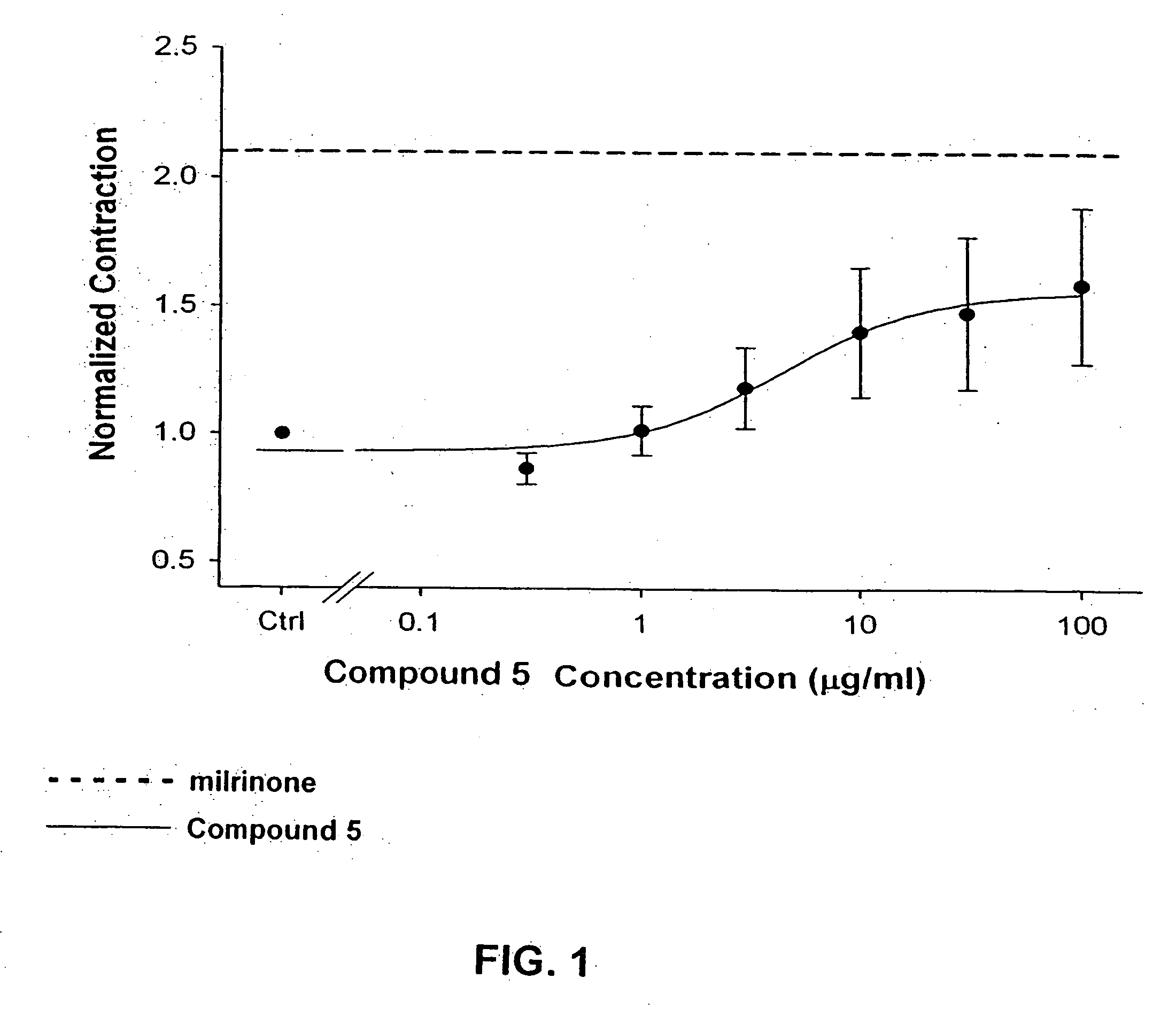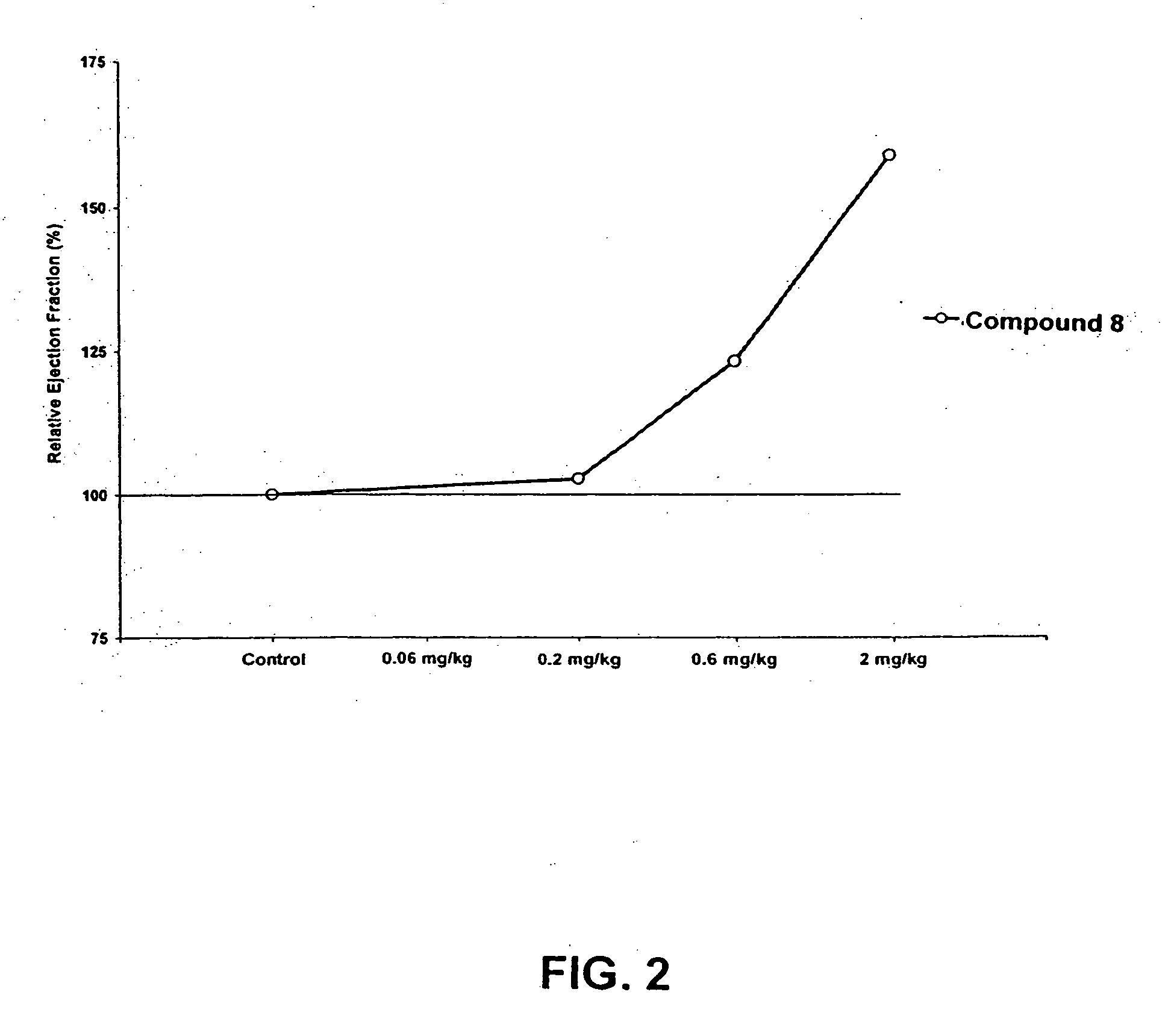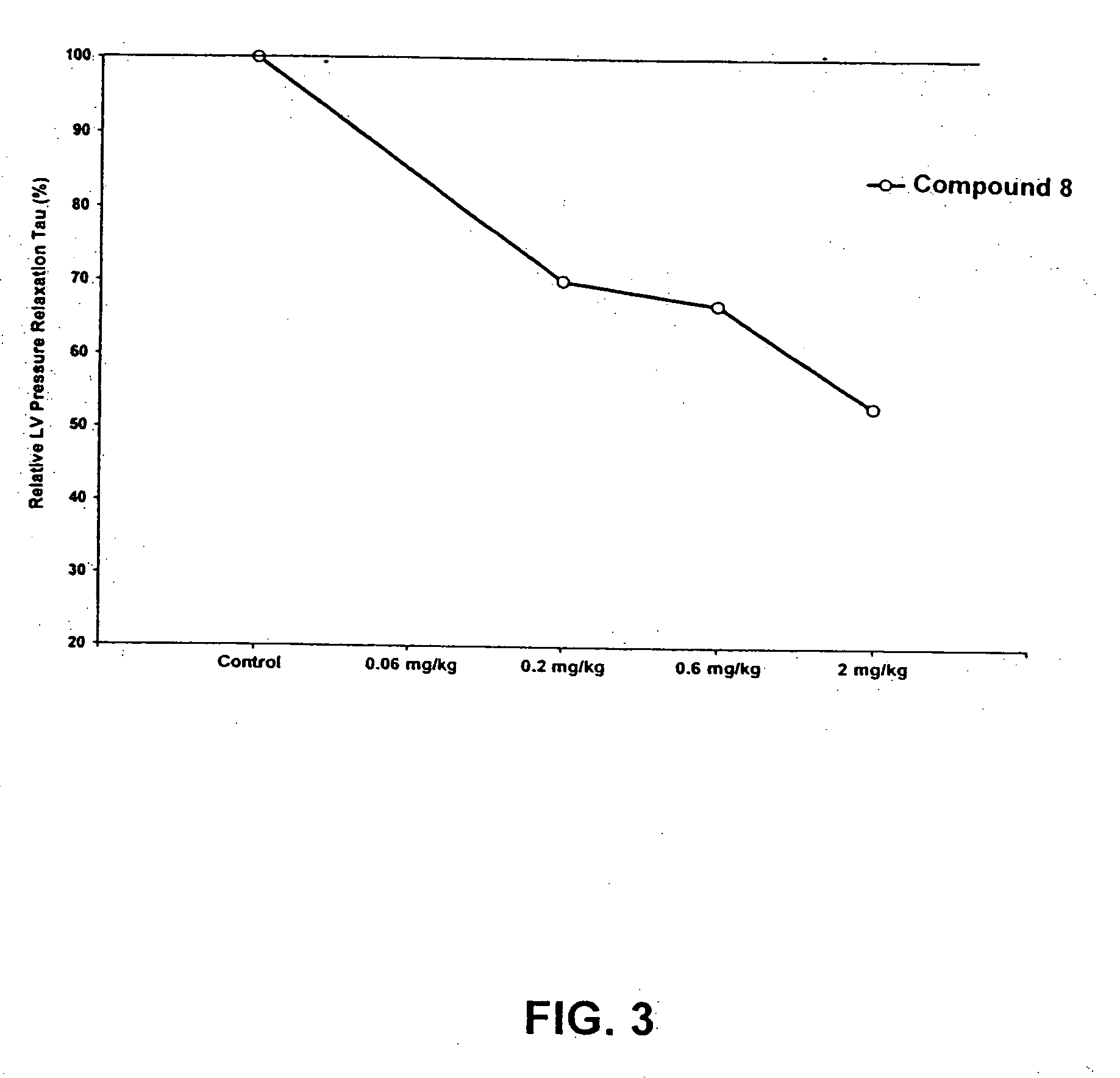Compounds having simultaneous ability to block L-type calcium channels and to inhibit phosphodiesterase type 3 activity
- Summary
- Abstract
- Description
- Claims
- Application Information
AI Technical Summary
Benefits of technology
Problems solved by technology
Method used
Image
Examples
example 1
[0111] Methyl 4-(2-chlorophenyl)-5-ethoxycarbonyl)-2-methyl-6-({2-[4-(2-oxo(6-hydroquinolyloxy)butanoylamino]ethoxy}methyl-1,4-dihydropyridine-3-carboxylate (Compound 5) was synthesized according to Scheme II.
[0112] Methyl 4-(2-Azidoethoxy)-3-oxobutanoate: Carbonyldiimidazole (13.75 g; 0.084 mol) and 2-azidoethoxy acetic acid (11.0 g; 0.08 mol) [prepared by the method of Arrowsmith et al., J. Med. Chem. 1986, 29,1696-1702] in 150 mL of methylene chloride was stirred under an inert atmosphere for 1 hour, and then treated with a solution of 2,2-dimethyl-1,3-dioxane-4,6-dione (11.0 g; 0.084 mol) and pyridine (6.1 g) in 50 mL of methylene chloride. After stirring overnight at room temperature, the organic phase was washed with 2×50 mL of 2M HCl, dried and concentrated. The crude material was dissolved in ethanol, refluxed for 3 hours, cooled and diluted with methylene chloride. The organic phase was washed with water, dried, and purified on a silica gel column (20% ethyl acetate in he...
example 2
[0118] Methyl 5-(methoxycarbonyl)-2-methyl-4-(2-nitrophenyl)-6-({2-[4-2-oxo(6-hydroquinolyloxy)butanoylamino]ethoxy}methyl)-1,4-dihydropyridine-3-carboxylate (Compound 6) was synthesized according to Scheme II. 1H NMR (400 MHz; CDCl3): δ 8.07 (m, 1H); 7.53 (m, 1H); 7.48 (m, 1H); 7.36 (d, 1H); 7.33 (m, 1H); 7.32 (m, 1H); 6.79 (m, 1H); 6.63 (m, 1H); 6.57 (d, 1H); 4.43 (m, 1H); 4.04 (m, 2H); 3.94 (m, 2H); 3.76 (s, 6H total); 3.63 (m, 2H); 3.37 (M, 2H); 2.18 (m, 2H); 1.99 (m, 2H); 1.71 (s, 3H).
example 3
[0119] Methyl 4-(2-chlorophenyl)-5-(methoxycarbonyl)-2-methyl-6-{[3-(2-oxo(6-hydroquinolyloxy))propoxy]methyl}-1,4-dihydropyridine-3-carboxylate (Compound 7) was synthesized according to Scheme III.
[0120] 6-[3-(1,1,2,2-tetramethyl-1-silapropoxy)propoxy]hydroquinolin-2-one: (3-Bromopropxyl)-tert-butyldimethylsilane (1.63 g, 1.50 mL, 6.5 mmol) was added drop-wise into a mixture of 6-hydroxyhydroquinolin-2-one (1.04 g, 6.5 mmol), DBU (1.73 g, 1.70 mL, 11.38 mmol) in isopropanol (20 mL). The mixture was refluxed for 21 hours and cooled to room temperature and evaporated to remove the solvent. The residue was extracted with ethyl acetate (EtOAc; 150 mL) and the extracts were washed with water, dried over Na2SO4, and filtered. The filtrate was concentrated to give the product as an off-white solid (1.6 g, 76%), 1H NMR (400 MHz; CDCl3): δ7.48 (m, 1H); 7.36 (d, 1H); 6.79 (m, 1H); 6.63 (m, 1H); 6.57 (d, 1H); 3.94 (m, 2H); 3.79 (m, 2H); 1.90 (m, 2H); 1.00-0.08 (overlapping singlets, 15H tot...
PUM
| Property | Measurement | Unit |
|---|---|---|
| Molar density | aaaaa | aaaaa |
| Molar density | aaaaa | aaaaa |
| Molar density | aaaaa | aaaaa |
Abstract
Description
Claims
Application Information
 Login to View More
Login to View More - R&D
- Intellectual Property
- Life Sciences
- Materials
- Tech Scout
- Unparalleled Data Quality
- Higher Quality Content
- 60% Fewer Hallucinations
Browse by: Latest US Patents, China's latest patents, Technical Efficacy Thesaurus, Application Domain, Technology Topic, Popular Technical Reports.
© 2025 PatSnap. All rights reserved.Legal|Privacy policy|Modern Slavery Act Transparency Statement|Sitemap|About US| Contact US: help@patsnap.com



